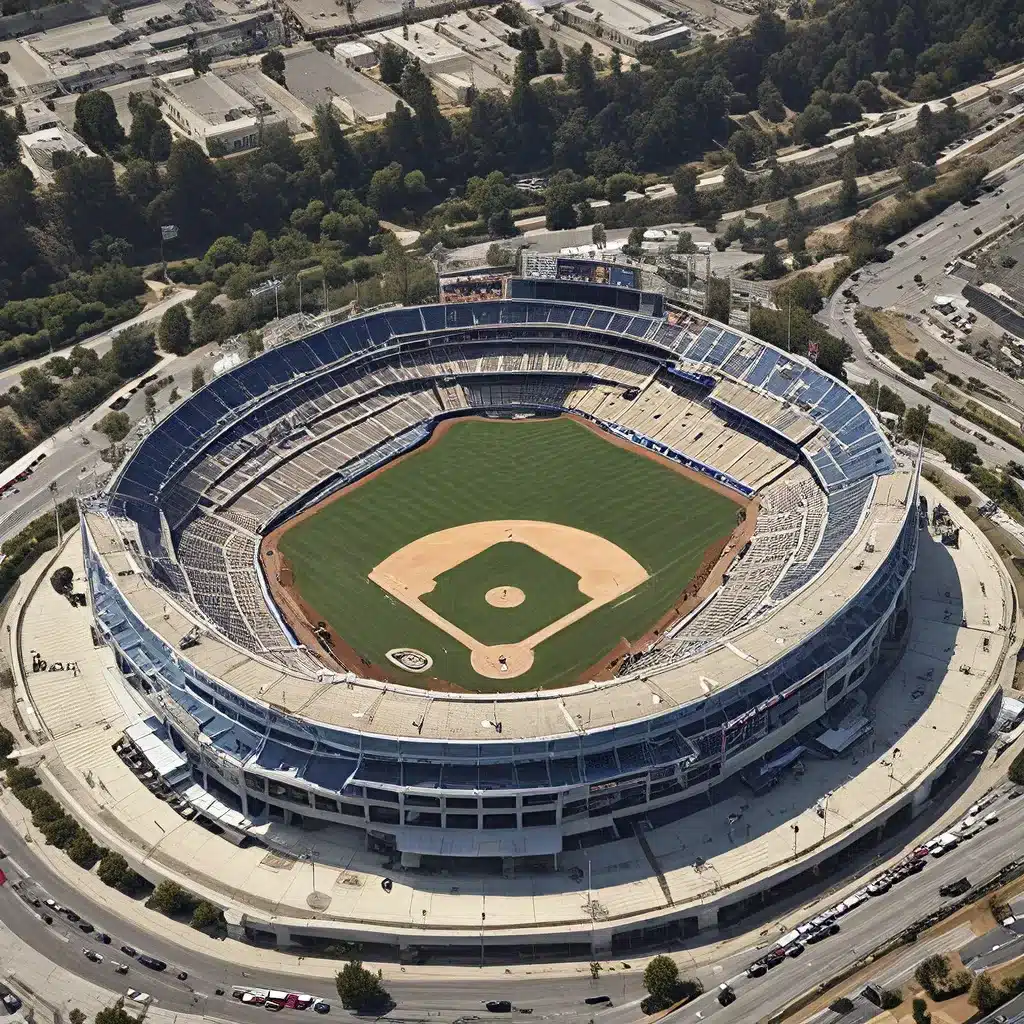
Nestled within the heart of Los Angeles, Dodger Stadium stands as a testament to the enduring passion and rich heritage of baseball in the City of Angels. This iconic sports venue, which first opened its doors in 1962, has become an integral part of the fabric of the West Coast, captivating generations of fans with its timeless charm and electrifying atmosphere.
A Storied History and Lasting Legacy
Dodger Stadium’s journey began in the late 1950s when the Brooklyn Dodgers, one of the most beloved baseball teams in the country, made the bold decision to relocate to the burgeoning city of Los Angeles. The team’s owner, Walter O’Malley, recognized the immense potential of the West Coast market and set out to create a stadium that would cement the Dodgers’ place in their new home.
The task of designing and constructing Dodger Stadium fell to acclaimed architect Emil Praeger, who envisioned a grand, open-air stadium that would seamlessly blend with the picturesque surroundings of the Chavez Ravine neighborhood. Praeger’s vision was to create a ballpark that would not only serve as a premier sporting venue but also a breathtaking architectural masterpiece, making the most of the region’s natural beauty.
The Los Angeles Times recounts the meticulous planning and construction process, which took nearly four years to complete and cost a staggering $23 million at the time. The stadium’s symmetrical design, with its distinctive circular configuration, has become an instantly recognizable landmark, setting it apart from traditional rectangular ballparks.
One of the most remarkable features of Dodger Stadium is its unparalleled sightlines, which provide fans with an immersive and intimate viewing experience, regardless of their seat location. The stadium’s seating capacity of over 56,000 ensures that every game is a lively and atmospheric affair, with the iconic Dodger blue and vibrant crowd energy adding to the excitement.
An Enduring Tradition and a Beloved Community
The history and legacy of Dodger Stadium are deeply intertwined with the rich baseball culture of Los Angeles. Since its inception, the stadium has witnessed countless memorable moments, from heroic plays and dramatic comebacks to championship-clinching victories. It has become a cherished gathering place for generations of Dodger fans, who have forged an unbreakable bond with their beloved team.
MLB.com highlights the stadium’s role as a civic and cultural hub, hosting not only baseball games but also a wide range of events, from concerts and festivals to political rallies and civic ceremonies. The Dodgers’ commitment to their community is evident in their numerous philanthropic initiatives, which have positively impacted the lives of countless Angelenos over the decades.
One of the most notable traditions at Dodger Stadium is the legendary Dodger Dog, a signature hot dog that has become synonymous with the overall game day experience. Fans eagerly anticipate the aroma of these iconic pork wieners wafting through the air, creating a sensory connection to the timeless and beloved nature of the stadium.
A Continuously Evolving Masterpiece
While Dodger Stadium has stood the test of time, it has also undergone a series of renovations and upgrades over the years to ensure that it remains a cutting-edge and fan-friendly destination. The Los Angeles Times reports on the $100 million renovation project completed in 2013, which introduced a modernized clubhouse, expanded concession stands, and improved accessibility for fans.
In recent years, the Dodgers have continued to invest in the stadium’s infrastructure and amenities, with the addition of a state-of-the-art video board, enhanced Wi-Fi connectivity, and upgraded seating options. These improvements have elevated the overall fan experience, ensuring that Dodger Stadium remains a premier and technologically-advanced sports venue.
Moreover, the Dodgers have also made a concerted effort to preserve the stadium’s historic character, maintaining the classic architectural elements that have defined its iconic silhouette. This delicate balance between tradition and innovation has allowed Dodger Stadium to evolve while still honoring its rich legacy and beloved status among fans.
A Bucket List Destination for Baseball Enthusiasts
Dodger Stadium’s enduring appeal and unparalleled atmosphere have firmly established it as a must-visit destination for baseball enthusiasts from around the world. Old Stadium Journey highlights the stadium’s inclusion on numerous bucket lists, with visitors often citing the electric game-day energy, the breathtaking views of the surrounding hills, and the immersive fan experience as key draws.
Whether you’re a lifelong Dodger devotee or a newcomer to the sport, a visit to Dodger Stadium promises to be a transformative and unforgettable experience. From the moment you step through the iconic Dodgers entrance, you’ll be enveloped in the rich history and vibrant culture that have made this beloved ballpark a West Coast and national treasure.
As the Dodgers continue to captivate audiences with their on-field exploits and championship aspirations, Dodger Stadium remains a shining example of how a sports venue can transcend its athletic purpose to become a cherished and integral part of a community’s identity and pride. For baseball enthusiasts and casual fans alike, a pilgrimage to this iconic stadium is a must-do bucket list item that will leave an indelible mark on your heart and memories.

